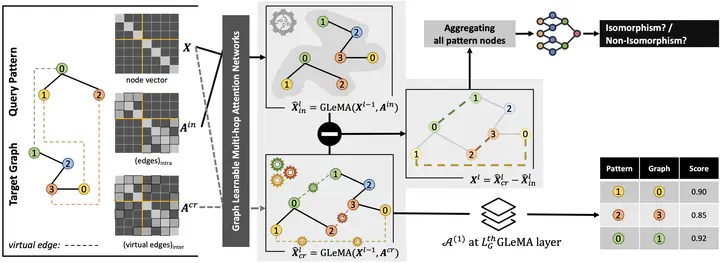
Abstract
Subgraph matching is a challenging problem with a wide range of applications in drug discovery, social network analysis, biochemistry, and cognitive science. It involves determining whether a given query graph is present within a larger target graph. Traditional graph-matching algorithms provide precise results but face challenges in large graph instances due to the NP-complete nature of the problem, limiting their practical applicability. In contrast, recent neural network-based approximations offer more scalable solutions but often lack interpretable node correspondences. To address these limitations, this article presents a multi-task learning framework called xNeuSM: Explainable Neural Subgraph Matching, which introduces Graph Learnable Multi-hop Attention Networks (GLeMA) that adaptively learn the parameters governing the attention factor decay for each node across hops rather than relying on fixed hyperparameters. Our framework jointly optimizes both subgraph matching and finding subgraph-isomorphism mappings. We provide a theoretical analysis establishing error bounds for GLeMA’s approximation of multi-hop attention as a function of the number of hops. Additionally, we prove that learning distinct attention decay factors for each node leads to a correct approximation of multi-hop attention. Empirical evaluation on real-world datasets shows that xNeuSM achieves substantial improvements in prediction F1 score of up to 34% compared to approximate baselines and, notably, at least a seven-fold faster query time than exact algorithms. With these results, xNeuSM can be applied to solve matching problems in various domains spanning from biochemistry to social science